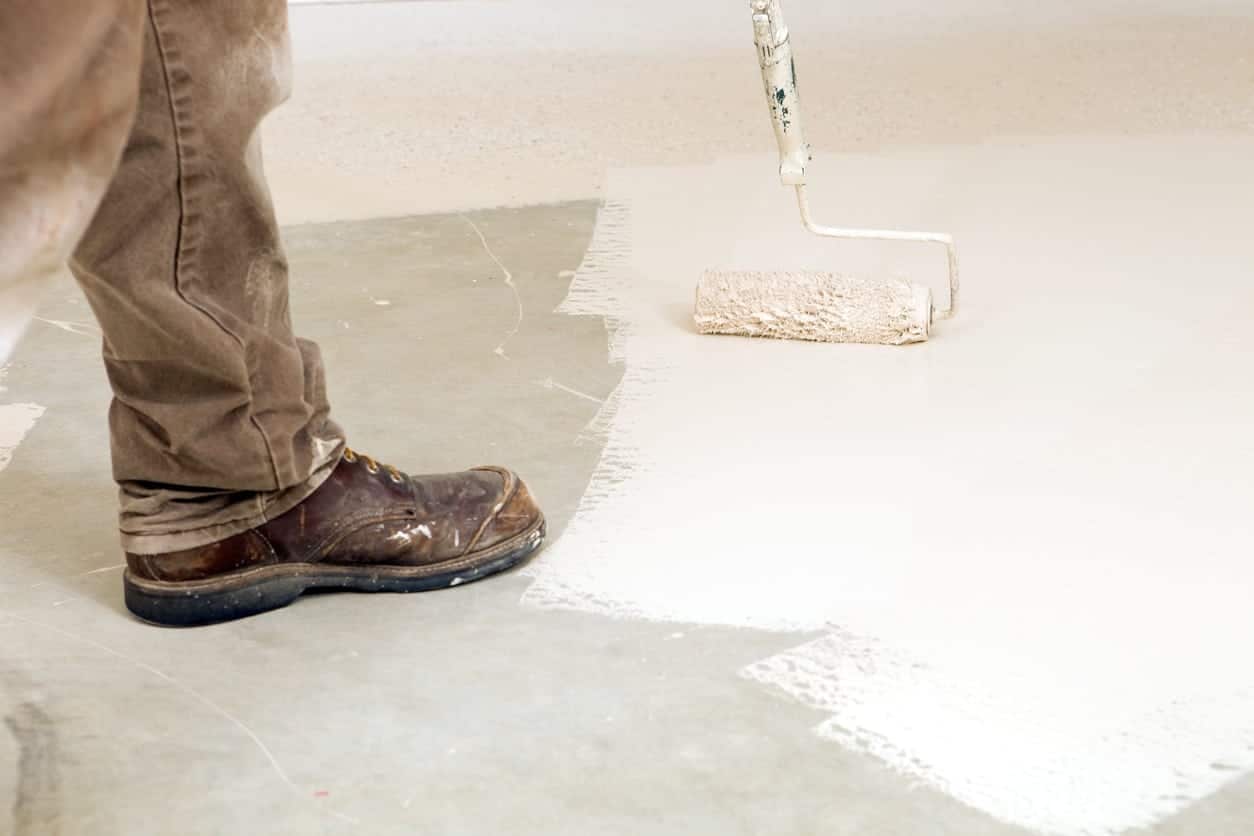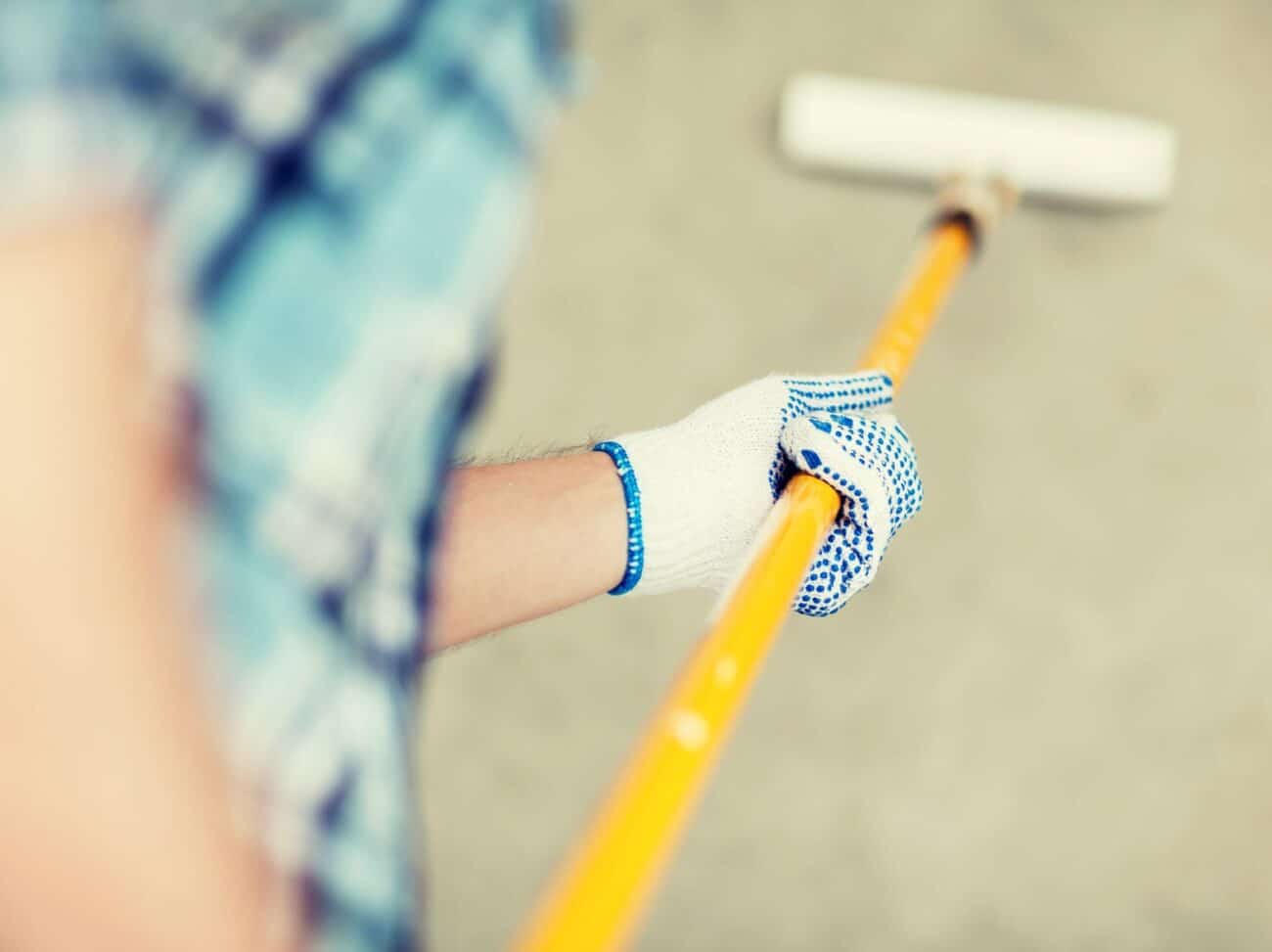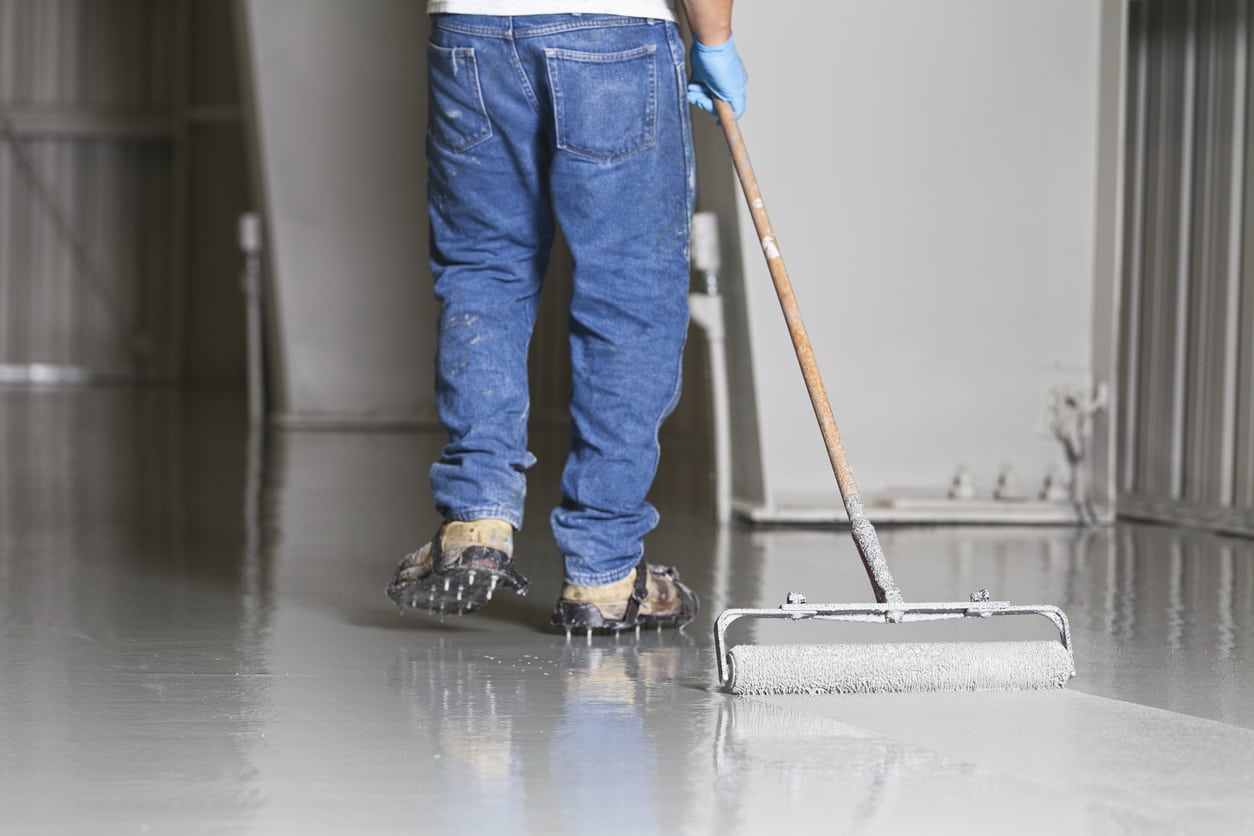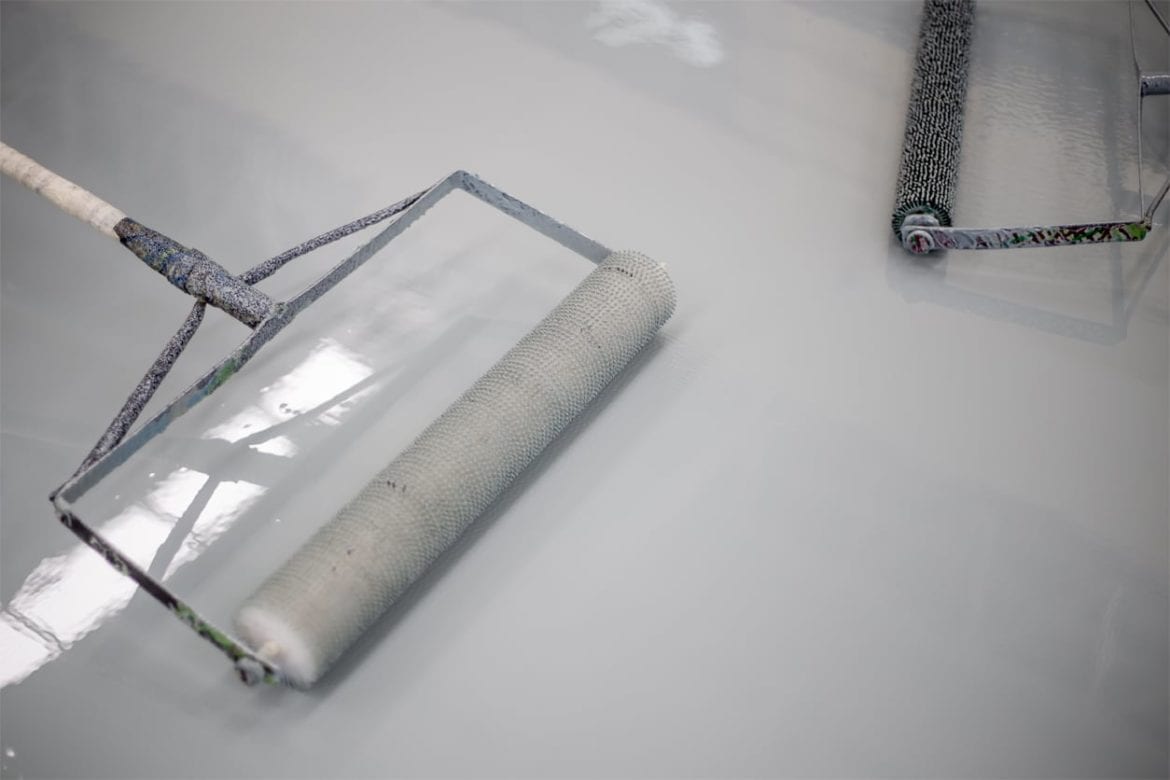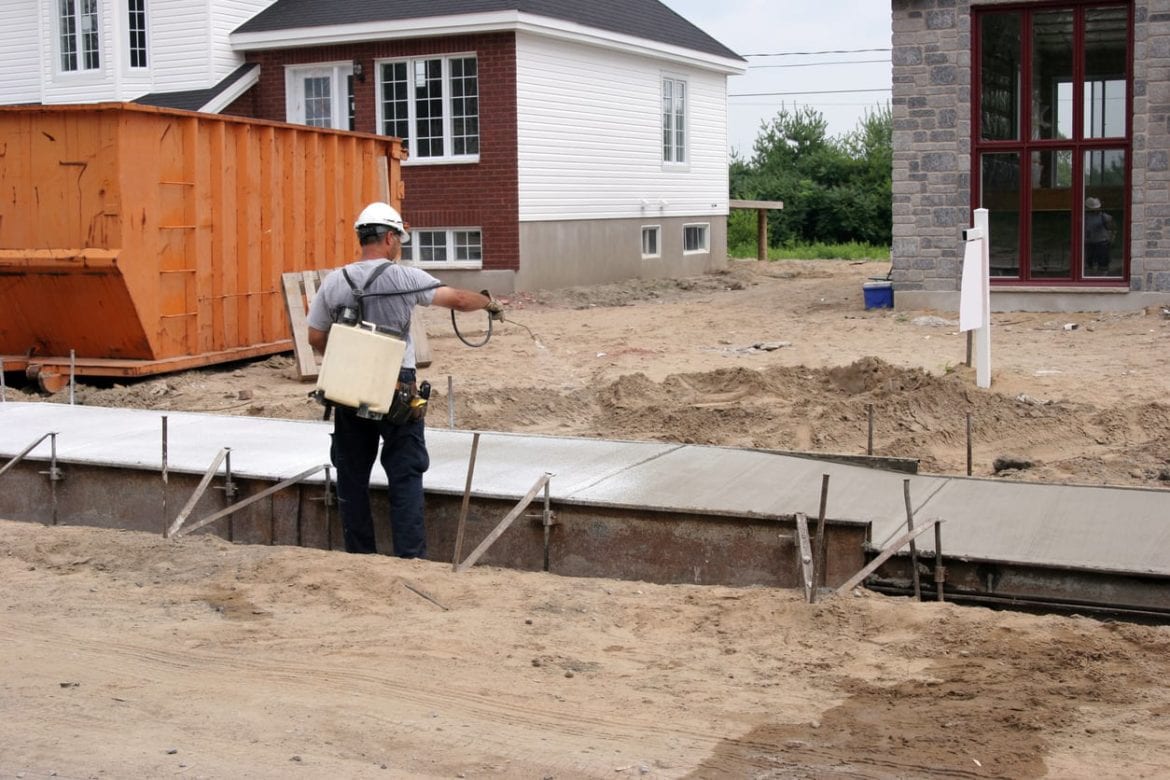While the concrete sealer market is roughly divided into the two categories of penetrating versus surface sealers, how do you tell which surface sealer is right for your particular project. While there are not a lot of different types of surface sealers, it is important to be knowledgeable of the differences in order to choose the appropriate product.
Acrylic sealers are probably the most common type of sealer. Used for lightweight projects and surface touches, acrylic sealers are solutions comprised of large particles of acrylic sealant suspended in either water or some sort of solvent, depending on if you opt for a water- or solvent-based product. Once applied to the concrete surface, the large particles remain on the surface to be spread out evenly.
Acrylic sealers offer a general level of protection: nothing too comprehensive, but nothing to sneeze at either. An acrylic sealer is a great choice for decorative concrete that is more delicate that poured or stamped concrete, as well for surfaces that do not see a large amount of heavy traffic and risk of abrasions or spills. The better acrylic sealer products offer UV protection, slip resistance, and will resist the passage of water into the concrete. Instead of penetrating within the concrete to chemically react, an acrylic sealer will act more like a raincoat to block the entrance of water at the surface.
Epoxy sealers, on the other hand, are another extremely popular concrete surface sealer. These products are significantly stronger than acrylic sealers, featuring a high level of adhesion to the concrete substrate. Once applied to the substrate, epoxy sealers offer excellent wear and abrasion resistance, all while effectively protecting the surface of the concrete from extreme chemical spills.
Due to their inherent strength, especially compared to an acrylic sealer, epoxies are the sealer of choice for projects that do not require a penetrating sealer. As a surface sealer, their strength, reliability, and longevity cannot be beat. You will commonly find epoxy sealers in industrial warehouses, large retails stores, and even airports – all of these places feature a high level of traffic that can lead to disastrous wear. Epoxies, like acrylics, are surface-level concrete sealers that are the right choice for more in-depth projects requiring a more comprehensive level of protection, while acrylics are better for residential and lighter applications.
With the large amount of concrete sealers on the market today, its often confusing for the consumer, professional or not, to know which is the strongest product. With companies making all sorts of claims on their website, which is perfectly legal for them to do, it can be difficult to know which products are real, and which are just being manufactured to make a quick buck.
The best way to tell if a company is for real, aside from extensive reviews and a long-standing reputation, is for their products to undergo extensive testing. Testing for concrete sealers is not yet a uniform requirement – however, the companies that test their products have nothing to hide, which should make you feel comfortable purchasing and using their sealers on your concrete.
One of the most well known testing standards is ASTM International. ASTM has a wide range of testing fields, from concrete and concrete sealers to metals and plastics. When concrete sealers are independently tested they are put through a set of rigorous tests that will determine their effectiveness, especially compared to the claims of manufacturers. The sealers are tested in such areas as resistance to artificial weathering, bond strength, penetration, and flexibility, among many others. They essentially test every product that is sent to them by the manufacturer with a thoroughness designed to root out any pretenders. Manufacturers have to pay a significant amount of money for their products to be tested – a company would only do this if they are sure their product is legitimate and effective. Therefore, companies that have products that passed the ASTM standards should be trusted, giving you some peace of mind as you shop online.
Epoxies, urethanes, and polyaspartics are all very similar types of concrete sealers. They are all surface sealers, meant to be spread evenly over the surface of a concrete slab, protecting it from all sorts of damage without penetrating past the surface. They are all also typically two-component polymers (though there are one-component products out there), meaning they have to be mixed prior to application.
Epoxies, urethanes, and polyaspartics are best suited for high traffic areas, such as the floors of large retail stores, industrial complexes, warehouses, and airports. All of these are examples of buildings whose floors are at a high risk of chemical spillage, abrasion, and other types of potential damage. The three types of sealer are all extremely tough and durable, making them all great choices.
The biggest difference comes with their chemical compositions. Epoxies are a little stronger than urethanes and polyaspartics, making them great basecoats and standalone layers. They bond extremely well to rough concrete surfaces, and they have a wide variety of features making them great for bottom layers. Urethanes can be applied as standalone products, but they are not meant for surfaces that are as rough. Polyaspartics are simply a type of urethane, typically aliphatic urethanes. They provide the same level of protection, but they also have the added bonus of drying incredibly fast. This quality makes them well suited to projects in retail stores or buildings that need to be open and functioning the next day.
All three of the products are strong and similar, but they also all work best as part of an epoxy system. Epoxy systems are simply the combination of one or two epoxy basecoats, followed by a urethane or polyaspartic topcoat, depending on your particular project. You can even add some sort of decorative touch to the project, such as adding sand or paint chips after the epoxy basecoats but before the urethane or polyaspartic topcoat. When applying an epoxy system, you must wait for each layer to dry completely before adding additional layers. If you want the best, strongest, and longest lasting results, you should elect to use an epoxy floor system, as this will ensure your concrete remains visually and structurally sound for years to come.
Polyaspartic sealers are a relatively new phenomenon that are increasingly becoming more popular as part of epoxy floor systems. However, they are also standalone products that may be the perfect choice for your particular concrete project. While acrylic sealers are great for decorative concrete and penetrating sealers are perfect for surfaces like basement floors that need deep protection, polyaspartics are slightly different.
Polyaspartic sealers are a surface level sealer, like acrylics and epoxies. Rather than penetrate into the concrete, they will remain on the surface to be applied comprehensively to cover the concrete surfaces they are meant to protect. They tend to be solvent-based, rather than water-based, providing thorough and lasting protection.
Polyaspartics are technically a type of urethane sealers. Urethanes, such as aliphatic urethanes, tend to be one- or two-component polymers that have varying solids contents. This means they are a perfect choice for floors and other concrete surfaces with high traffic and risk of abrasions, scratches, and spills. Polyaspartics feature excellent hardness and abrasion resistance, all while repelling chemical and moisture stains.
Polyaspartics are fast becoming recognized as a miracle material. They demonstrate excellent flexibility, able to bridge small cracks and protect already cracked surfaces. Similarly, they can be applied at almost any temperature, always featuring incredible bond strength to the concrete substrate. They are long-lasting, clear, and they can easily be applied over an epoxy basecoat or a number of epoxy basecoats.
The best quality polyaspartics possess, however, is its incredibly fast tack-free dry time. Drying in as little as one hour, depending on the particular conditions of each project, polyaspartics are the best choice for retail stores, industrial warehouses, business parks, and other places whose concrete is in need of help. Simply apply the polyaspartic coating overnight, and the floor will be dry and ready to use by the morning. The high level of protection afforded by polyaspartics, in conjunction with their exceptionally fast dry time, make them an ideal choice for many concrete sealing situations.
Our Take: One of the best polyaspartics is Polyaspartic 745 with a super fast dry time of 1-3 hours
With all of the concrete in the world (trust me, it’s an incredible amount), there are a number of different projects and uses people find for the material’s presence. However, all concrete, regardless of the project, is susceptible to environmental damage and gradual erosion due to the elements. Everyone has seen decrepit sidewalks cracked and spalled over time, allowing weeds to grow through, as well as slowly decaying bridge supports that are a major cause for concern in some areas of the country. There are an enormous number of other examples of decaying concrete, all of which emphasize the importance of taking the proper steps to seal and protect your concrete projects as soon as they are completed.
The best, easiest, and most cost effective way to protect concrete is by sealing it with a high quality concrete sealer. However, how do you know which product to use on your particular project? There is an incredible variety of sealers on the market, and it can often be confusing and daunting to wade through the many offerings.
To begin, if you have any sort of decorative concrete, such as a patio pool deck or a driveway made of pavers, you want to use an acrylic concrete sealer. An acrylic sealer will not harm your more delicate, decorative concrete. Instead of penetrating into the material, an acrylic sealer will remain on the surface, with its large particles of sealant unable to penetrate past the tiny surface pores. Pooling on the surface for you to spread out during the application process, the acrylic sealer will eventually provide a comprehensive layer of protection, much like a raincoat, over the surface of your concrete.
If you have more durable concrete, however, such as in a garage or a basement, you will likely want to use a penetrating concrete sealer. Penetrating sealers have smaller particles of sealant that can penetrate past the miniscule surface pores, delving deep into the concrete. Once in the concrete, the sealers will react with the various minerals already in the concrete, chemically strengthening and densifying the material. A by-product to this strengthening is the blocking up of pores and hairline cracks within the concrete, helping improve the concrete’s resistance to water damage. The better products on the market will even waterproof your concrete – most penetrating sealers are even permanent as well, providing life-long protection.
Another option in concrete sealer is if you want to put in a decorative floor system. If you have a gray, plain concrete slab as a floor, such as in retail stores, warehouses, or industrial-type buildings, then you may want to increase the visual appeal of your space. The easiest way to do this while also protecting the concrete is to use an epoxy floor system. Epoxies are a type of concrete sealer that remain on the surface level. They are durable and high-resistance, making them perfect for places with high traffic and the potential for damage from abrasions and scratches. Simply apply the epoxy basecoats, add any sort of decorative aggregate you desire (such as quartz, sand, or paint chips), and finish it off with a urethane or polyaspartic topcoat. A urethane topcoat will be clear and will feature strong resistance to spills and abrasions. A polyaspartic is actually just another type of urethane coat, though it dries incredibly fast, making it a premier choice for those wishing to finish projects overnight (re: many retail stores).
All of these options are great for protecting, and even enhancing, your various concrete slabs. Whatever your project, there will always be a best choice in concrete sealer, making it imperative that you do your research thoroughly before purchasing the sealer and getting to work.
Cure and seal products are a great way to protect and cure a new slab of concrete. While concrete is known to be strong and durable, nigh indestructible, it does not just appear that way. Instead, it goes through a long and delicate process of mixing and curing that gives it its strength. If you see cracked, crumbling concrete, it is likely that the concrete has actually been poorly mixed and cured. The easiest way to avoid this is to make sure your concrete cures properly.
Concrete is mixed with Portland cement, water, and some sort of aggregate, like gravel or sand. Once mixed, it is poured and spread out, according to the project’s needs. However, after it has been poured, the concrete needs to cure for the proper amount of time. The key to curing is to maintain a consistence level of moisture and temperature, which helps the concrete gain most of its potential strength. Without a proper curing process, the concrete will never be as strong as it could be, and it will manifest problems later in its life.
A cure and seal is a product that provides a membrane over the top of freshly poured concrete. This membrane helps retain the proper amount of moisture while keeping the concrete at an adequate temperature for the curing process to be at its most effective. While the curing process is traditional done with burlap sacks or tarps and a consistent stream of water, cure and seal products are relative newcomers to the stage.
The biggest advantage to cure and seal products is that they provide a layer of protection for your concrete above and beyond what a traditional curing process will give. Typically, once the concrete is cured after the thirty-day period, it is ready to be used, though it is not protected from stains and negative effects of weathering. However, concrete treated with a cure and seal process is cured and sealed, just as the name implies. That means that the concrete actually comes into the world sealed, protected from potential disasters in the early stages of its life. While the seal will have to be renewed some years later, depending on the cure and seal product used, as well as a variety of other factors, the concrete will be able to repel stains and increase its longevity at crucial stages in its existence.
Our Take: Some excellent cure and seal sealers include Iso-Cure C309

